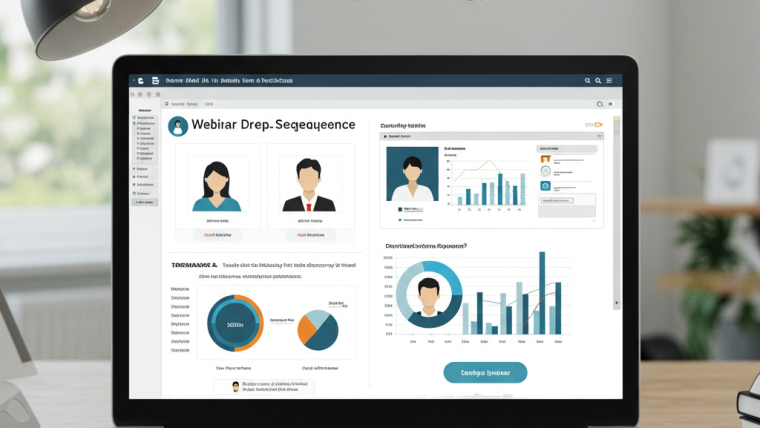As the lines between virtual and physical interactions continue to blur, hybrid events have stepped into the spotlight. Offering a combination of both in-person and virtual experiences, hybrid events are becoming the go-to solution for organizations seeking inclusivity, flexibility, and wider reach. But what makes hybrid events so popular, and how can you execute them successfully?
This blog will break down the benefits, challenges, and best practices for hosting hybrid events. We’ll also highlight examples of successful hybrid events to inspire your planning efforts.
What Are Hybrid Events and Why Are They Trending?
Hybrid events are gatherings that seamlessly blend in-person and virtual components. Attendees can decide whether to engage in the physical venue or online, based on their preferences or circumstances. From webinars and concerts to product launches and conferences, hybrid events offer endless possibilities.
The surge in hybrid events can be attributed to the COVID-19 pandemic, which accelerated the adoption of virtual platforms. However, organizations have embraced hybrid formats not just as a temporary fix but as a long-term strategy. Why? Because they cater to diverse audiences and add immense value by combining the best of both worlds. Before deciding on a hybrid setup, it’s helpful to weigh the pros and cons of hosting webinars to understand your options.
The Benefits of Hybrid Events
1. Expanded Accessibility
One of the key advantages of hybrid events is their inclusive nature. While physical events may limit participation due to geographical or financial constraints, hybrid events create a level playing field. Virtual attendees can join from the comfort of their homes, eliminating travel costs or relocating barriers, and creating opportunities for global engagement.
For instance, an educational conference can include students from developing countries or working professionals who can’t take time off to travel.
2. Wider Audience Reach
Hybrid events naturally broaden your potential audience. An in-person venue may have a capacity limit, but virtual attendees face no such restrictions. This dual format enables organizers to tap into new markets, attract diverse groups, and draw an audience of unprecedented size.
Beyond increased numbers, reaching a wider audience also makes your event more financially viable. Many organizations now use hybrid events as an opportunity to offer tiered registration, catering to different audience segments with options like recorded sessions or additional workshop access.
3. Enhanced Engagement Opportunities
The intersection of virtual and in-person settings opens up new channels for audience engagement. Interactive tools, gamification, breakout sessions, and live polls ensure that both physical and digital attendees participate actively. You can even foster connections between in-person and virtual attendees, bridging the gap between the two experiences.
Picture this scenario: An on-site giveaway is synced with a virtual quiz, so attendees in both settings can win prizes. Integrating these formats encourages collaboration and inclusion, making the event memorable for everyone.
The Challenges of Hybrid Events
1. High-Tech Demands
The dependence on technology to merge in-person and virtual elements can be daunting. Reliable internet, professional-grade cameras, and event management software are just the basics. Streaming glitches, audio lags, or software breakdowns can derail the attendee experience.
To counter this, invest in backup systems and conduct thorough tech rehearsals. Choose platforms specifically designed for hybrid events to ensure smoother execution.
2. Balancing Both Experiences
Creating a seamless experience for both virtual and live audiences presents another challenge. It’s easy to focus more heavily on physical attendees, leaving the virtual audience feeling sidelined (or vice versa).
To strike the right balance, feature activities and content that can easily be adapted to both formats. For example, keynote speakers can engage both audiences simultaneously via livestreaming, while virtual networking tools can replicate hallway conversations from the in-person event.
3. Cost Considerations
Hybrid events often require a larger budget compared to fully virtual or in-person events. You’re essentially running two experiences in parallel, which doubles your operational needs. From venue costs to production fees and technical support, the financial investment can quickly add up.
However, with careful planning and smart budgeting, hybrid events can deliver significant ROI. Sponsorship opportunities may appeal to a larger audience due to the dual formats, offsetting additional costs.
Tips for Planning a Successful Hybrid Event
Want to ensure your hybrid event is a hit? Here are some tried-and-tested tips to help you make an impact.
1. Understand Your Audience
Before planning your hybrid event, analyze your audience’s preferences. Are they predominantly virtual attendees? Are they tech-savvy? Understanding these details will help you design an experience that resonates with all participants.
2. Invest in Technology
Choose a platform equipped to host hybrid events. Look for features like video streaming, chat functions, virtual breakouts, and post-event analytics. It’s also important to secure reliable AV services for in-person attendees. Conduct multiple test runs so your event day is free from technological hiccups.
3. Focus on Content Quality
Content is king, whether your event is virtual, physical, or hybrid. Make sure presentations, workshops, and performances are engaging and high-quality. Ensure your speakers and facilitators are prepared to interact with both in-person and online audiences effectively.
4. Foster Networking Across Formats
Encourage interaction between all attendees with features like live Q&A sessions, collaboration boards, and online networking zones. Create opportunities for in-person and virtual participants to mingle, ensuring everyone feels included.
5. Measure Success
Post-event analytics can help you understand what worked and what didn’t. Monitor metrics like attendance rates, audience feedback, session engagement, and sponsorship ROI. Use these insights to refine your next hybrid event.
Examples of Successful Hybrid Events
1. CES (Consumer Electronics Show) 2022
The CES 2022 event brought together physical attendees in Las Vegas while also hosting a virtual audience via a dedicated platform. With livestreamed keynotes and virtual breakout rooms, the event managed to seamlessly bridge the gap between its global attendees.
2. Apple Product Launches
Apple has been pioneering hybrid events with multimedia-rich product launches that blend live stages and virtual streaming. They’ve mastered the art of engaging both audiences simultaneously using high-quality videos, real-time reactions, and global accessibility.
3. HubSpot’s INBOUND Conference
Known for its innovation, HubSpot’s INBOUND Conference adopted a hybrid model to cater to participants from around the world. Virtual workshops, global speakers, and an engaging online platform sparked widespread interest and participation.
Hybrid Events Are the Future of Gatherings
Hybrid events represent the best of both worlds. By combining physical interaction with online inclusivity, they’re rewriting the rules of how we gather, learn, and connect. While challenges like technology and cost exist, the benefits far outweigh the barriers.
Whether you’re an event planner, a company, or a brand, tapping into hybrid formats can help widen your reach, boost engagement, and future-proof your gatherings. Start planning your hybrid event today to unlock its incredible potential!








Webinar Analytics: A Complete Guide to Measuring Success and Improving Performance
The Ultimate Webinar Follow-Up Strategy to Turn Attendees into Customers
Webinar Accessibility Best Practices: How to Make Your Online Events Inclusive for All
Webinar Personalization: Tailoring Content to Audience Segments for Maximum Engagement